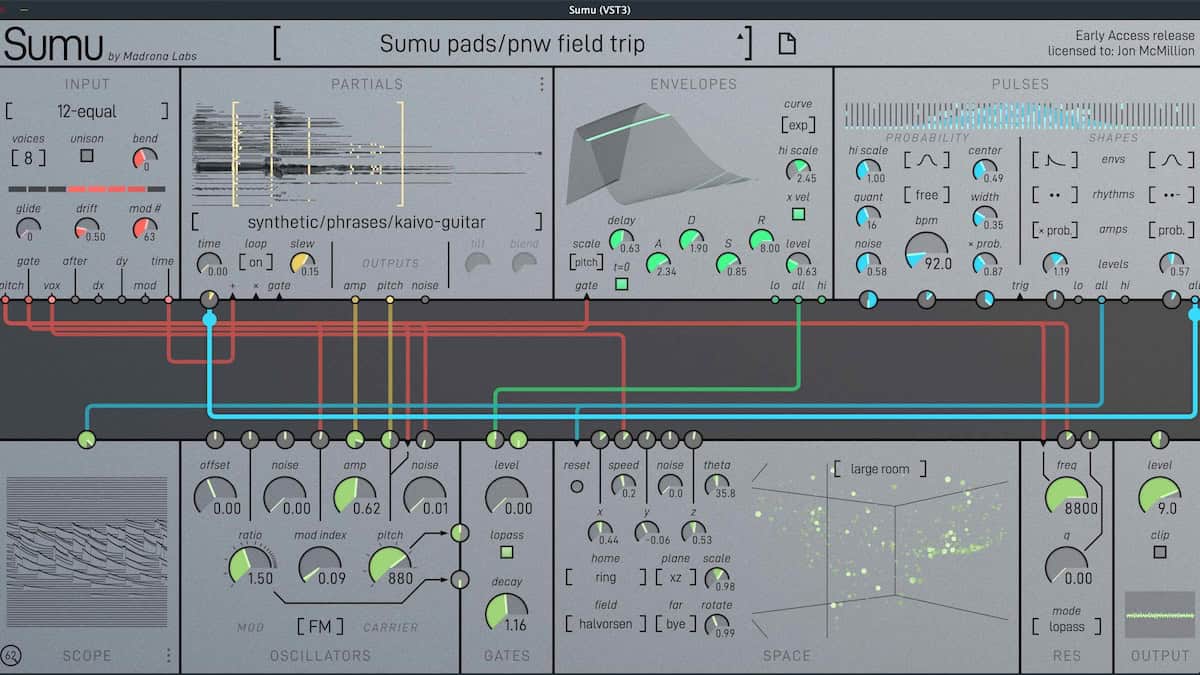In This Issue
New Sumu Softsynth From Madrona Labs

Sumu breaks new ground in software synthesis, combining additive resynthesis with FM and vector field spatialization.
PRESS ANNOUNCEMENT
In Sumu, sampled sounds are represented as collections of up to 64 bandwidth-enhanced partials, each with a frequency, volume, and noisiness that can change over time. This representation of sound makes all kinds of creative changes possible, from natural-sounding time stretching to exotic timbral manipulations.
Users of Madrona Labs’ other software synthesizers—Aalto, Kaivo, and Virta—will find Sumu’s design very familiar, with its fully resizable, vector-based user interface. Every control is on a single page, a design decision intended to support creative flow. Sumu’s ten modules include PARTIALS, for analyzed sound playback, PULSES, for generating musical pulse trains and modulation, SPACE, for spatializing each oscillator pair, and RES, with analog-modeled filters based on the classic four-pole ladder design. The modules are designed around a central multi-channel patcher that makes it possible to create complex patches quickly and easily, with connections that can never obscure other controls.
Using the patcher, each partial in a sound can be manipulated independently in a way that is designed to feel more like playing than programming. While the patcher keeps things simple on the surface, each patch cord has 64 independent channels in it. To view all this data, many of the modules have real-time visualization tools in them. For example, the space module presents a 3d view that shows the location of each partial of each voice, updated up to 60 times a second. According to Madrona Labs, these visualizations are not merely visual fluff, but precise: what you see is what you hear.
















